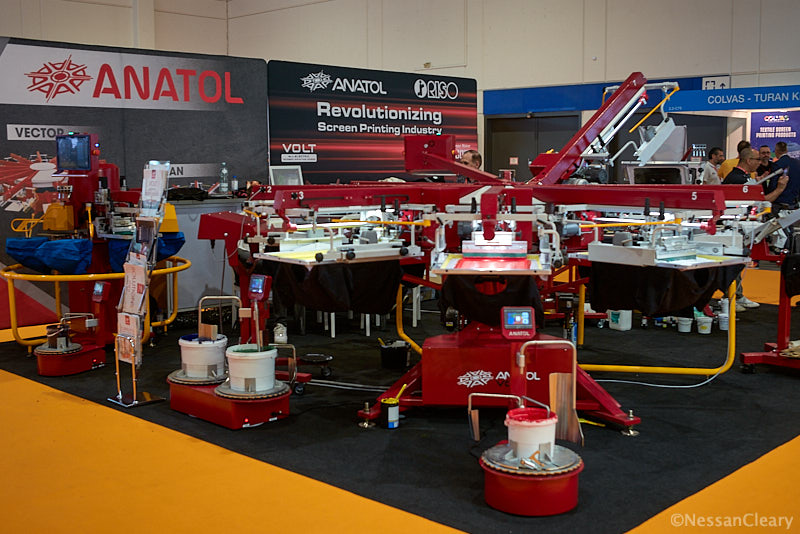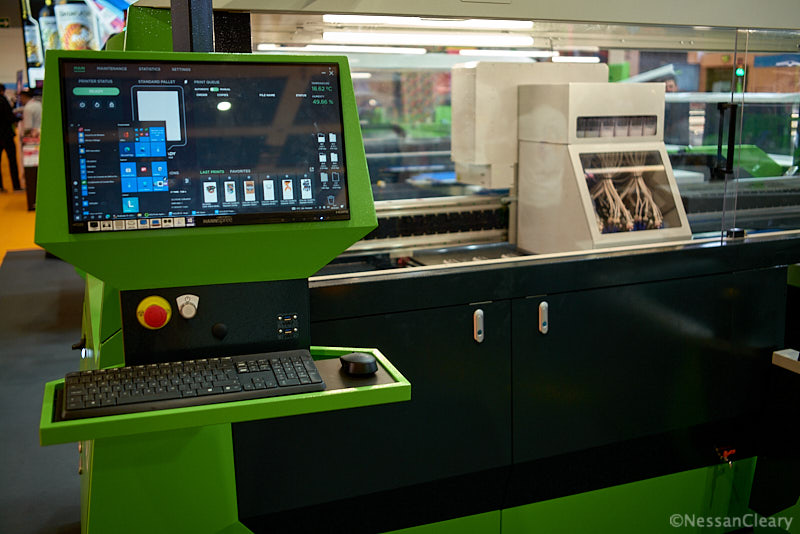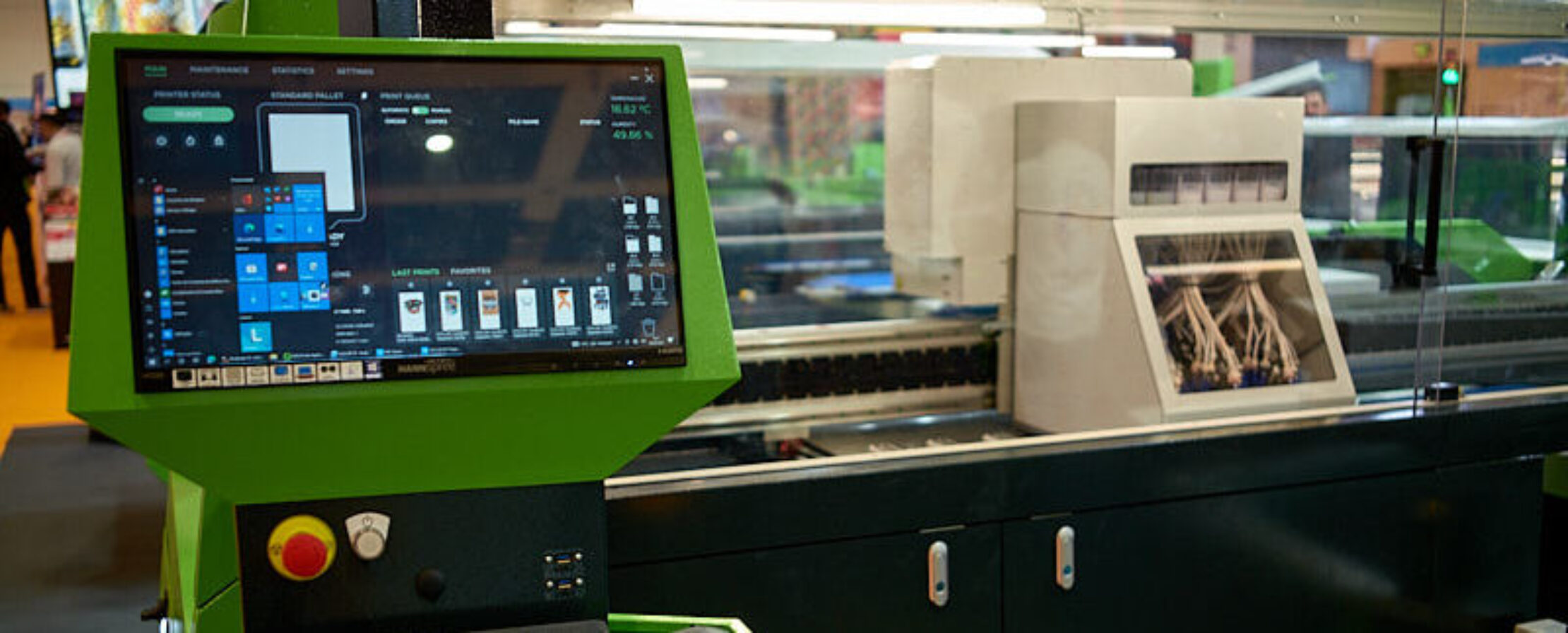Screen printing remains competitive for textiles by embracing customisation and bold colours, alongside digital growth. Key trends include hybrid inkjet solutions for short runs/personalisation, increased automation with AI for efficiency, and a strong focus on sustainability through energy-efficient presses, eco-friendly inks, and improved waste management. Streamlining workflow is crucial for future competitiveness.
When it comes to putting graphics onto textiles, screen printing is still one of the best options around despite all the many digital solutions that are available. It’s reasonably cost effective especially on longer runs, and offers a range of effects together with a decent hand feel and excellent washfastness. However, it is coming under pressure from the growth in digital textile printing, particularly direct-to-garment and direct-to-film. But there are a number of trends that screen printers can tap into and stay competitive.
There is some evidence of a trend towards greater customisation and personalisation, largely driven by the growing use of digital printing. Personalisation of clothing – where each item is unique – is still a relatively small part of the overall apparel market and is heavily based around particular events, such as a trade show or hen party, where the print runs are likely to be very short. Customisation on the other hand is also growing, whereby the same design is tweaked to create specific orders with their own SKU. This could be something as simple as changing the colour scheme. A Union Jack pattern, for example, could be printed with red, white and blue screens. Or it could be reproduced in monochrome, or even in bright neons, all with the same design and prepress across the individual print runs. This is helped by a trend toward limited editions of variations around a single design, each of which can attract higher prices.

This also coincides with a trend toward bold, bright colours as people choose clothes that will help them stand out. Screen printing inks are ideally suited to this and can be matched with special effects inks such as glow-in-the-dark and textured effects.
So far, the main impact of digital printing has been to increase the demand for fast turnaround of jobs, with customers wanting their goods almost as soon as they have ordered them. This is matched by retailers wanting to hold less stock, and to have new orders delivered almost overnight. This means more actual orders, but with each order being for shorter runs. This in turn is forcing screen printers to become more efficient, to speed up their production for faster turnaround, and to gang jobs together where possible to realise economies of scale.
As part of this, one of the clearest trends in screen printing is towards more hybrid solutions that embrace inkjet units integrated into the carousel. This can allow users to exploit the best of both technologies on a single press line without having to invest in additional machinery. The most common approach is to integrate a four-colour inkjet unit into an oval design. On its own, this unit can produce personalised designs on-demand but will only be cost effective for relatively short runs. The hybrid designs really come into their own when the digital unit is used to tweak a longer run design, such as adding a name to personalise a t-shirt or adding fine lines and tiny details to the design. The rest of the graphic can be screen printed, allowing for bold colourful designs whilst taking advantage of its cheaper costs on longer runs.
We will inevitably see more use of automation, even in a relatively manual process like screen printing. This is driven by a number of factors, including the rising costs of labour, especially in more developed countries but which also affects emerging economies. This cost also includes the bill for training staff. On top of this, many print service providers report difficulties in finding and retaining new staff, with many younger people apparently worried that printing might not offer them a long term career. Automation is often seen as a way around these issues.

However, the real advantage of automation is in eliminating human error and producing results that are easily repeatable for future jobs. Naturally, these days automation includes some artificial intelligence, which is particularly helpful in colour matching and mixing inks to particular substrates. AI can also be very helpful in predicting maintenance issues, allowing for more pro-active maintenance and less breakdowns and service call-outs. This trend can also be seen in a greater emphasis on both pre-press and workflow, to push more jobs through to the press.
Sustainability
There’s clearly a greater focus on sustainability throughout all aspects of printing, and this includes screen printing. There are a number of different aspects, including a new generation of presses that use less energy. Some manufacturers have also introduced electric-only screen printing machines, removing the need to maintain an air pressure system in order to cut down on their energy consumption. Both Anatol and Roq demonstrated such machines at the last Fespa Global event in Berlin this year.
There is also a demand for more eco-friendly water-based and discharge inks, which should be free from harmful chemicals. They also give a softer feel than the more common plastisol inks, which is something that consumers are coming to expect after experiencing DtG prints. These inks should also be easier to wash-up, with less requirement for harmful chemicals in cleaning solutions.
We can also expect to see more interest in using materials that are easier to recycle for the production of screens and frames. Printers should also be paying attention to cutting their water usage, which along with reducing the energy consumption can help to lower the carbon footprint and also makes good economic sense.
However, the main factor affecting sustainability is undoubtedly the substrates used. Here there is a more mixed picture, with most people assuming that all textiles are easily recycled. In reality, there are many factors to take into account, including the carbon footprint in the material production, the recyclability or biodegradability, the functionality of the material and the cost so there are no easy answers.
In conclusion, adapting digital technologies where appropriate and exploiting the strengths of screen printing and the varied range of inks available will help print service providers stay competitive. But the most important trend should be to improve the order intake and workflow to squeeze more efficiencies out of shorter print runs.
